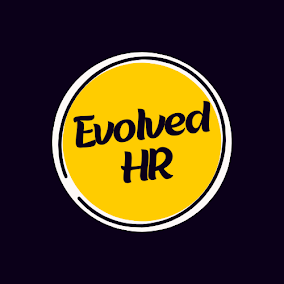Encourage employees to explore informal options first before filing a formal grievance; this helps prevent workplace drama from intensifying further.
 |
| Employee Grievance |
Listen carefully and respectfully to all parties involved in the dispute, without interrupting or making judgements.
Once your investigation has concluded, conduct a formal meeting with the employee who submitted their grievance and any relevant parties. Take notes of this meeting and distribute them accordingly.
Identifying the Issue
Employees are more likely to file grievances when their concerns are not heard or taken seriously, which means addressing even minor issues promptly can boost morale and help avoid future grievances or lawsuits. Also, taking this approach could bring attention to persistent problems like whiners that would otherwise remain hidden from view.
Make sure your employees know they can turn to supervisors and HR personnel with any concerns, while simultaneously encouraging open communication by offering channels such as suggestion boxes or regular team meetings for feedback. Finally, include training for managers and HR staff on effective conflict resolution and active listening techniques so they can address grievances with empathy and professionalism.
Locate the source of conflict and encourage both parties to discuss their feelings openly and respectfully, asking questions to clarify misunderstandings and uncover common ground. Once emotions have subsided, both parties may realize they want the same result and can come together towards finding a resolution together.
Once you've reviewed all available evidence and conducted an inquiry into an incident, it's time to make an informed decision about a grievance. Accept it fully or partially; deny it entirely; or provide advice if an employee wants to appeal the decision. Once reached, be sure to communicate it clearly to all involved parties while explaining your rationale - all this ensures transparency and fairness!
Gathering Information
Before making a decision about an employee grievance, it's essential that all relevant information be gathered from those involved, including employees themselves, supervisors and any third-party individuals involved. Consultation or further research may also be necessary in this instance.
Employees need to know their concerns have been heard. This should occur quickly after filing their grievance, so as to reassure employees that their issues are being taken seriously. A system should be in place that allows employees to raise concerns easily while providing an efficient process for handling them.
After gathering all necessary information, it's time to carefully assess the situation and decide how best to address the grievance. Your actions could range from accepting (complete or partial), rejecting, or providing training on how to handle similar circumstances in future.
Have a comprehensive employee grievance policy in place is key to protecting your organization against costly legal disputes and creating an enjoyable work environment. Train managers and HR staff on active listening techniques, mediation, and conflict resolution to reduce misunderstandings from turning into full-blown grievances. Encourage open communication by holding regular team meetings or offering suggestion boxes as means for employees to voice their concerns to supervisors directly.
Mediation
Employees need to feel that their concerns are being heard, so quickly acknowledging their grievance gives them a sense of control and gives them comfort with the process. Acknowledging can include sending an email or calling them directly with updates regarding what steps have been taken and any misunderstandings. Doing this can prevent future miscommunication regarding the status of the grievance.
Once all the data have been gathered, it is time to make a decision on how best to address the situation. This may involve disciplinary measures, policy modifications or other forms of corrective actions; just ensure it abides with company policy and meets fairness considerations. It would also be prudent to record every step in order to keep an accurate account. Furthermore, document the whole process with care so as not to expose confidential or personal information that could compromise company policies or compromising employee welfare.
As part of the mediation process, it can be useful to encourage employees involved in a conflict to discuss their individual interests and work towards common goals. Once issues have been identified, employees are often quick to find common ground and create solutions that benefit both sides.
Note that not all conflicts can be easily resolved, and that some employees simply aren't compatible to working together. This shouldn't necessarily be seen as negative, rather as an indicator that more training or corrective measures may be required in order to enhance team dynamics.
Making a Decision
As part of the mediation process, it is vital that all parties can express their concerns in an atmosphere conducive to active listening and empathy. Finding common ground and working towards an agreed upon resolution are also paramount; giving employees the ability to openly and honestly communicate helps reduce conflict while increasing trust between staff members; encourage this through regular team meetings, suggestion boxes or any other means available for employee feedback.
Once all relevant information has been compiled and discussed by all parties involved, it's time to make a decision. Evaluate all available data while keeping company policies in mind when making an executive decision and communicating your rationale to all involved.
Ensuring grievances are thoroughly addressed is vital to maintaining a positive workplace culture. This requires actively listening to employee issues, clearing up misunderstandings and, when needed, mediation or arbitration to achieve resolution.
Encourage communication and resolve conflicts will not solve all of your company's issues, but they are an important first step. When responding to gossip or disputes that cannot be settled through informal means alone, bring in outside experts if needed - managers and HR representatives must receive training in conflict resolution, active listening and mediation techniques so they are equipped to deal with employee-related incidents professionally.





.jpg)

.png)
No comments:
Post a Comment